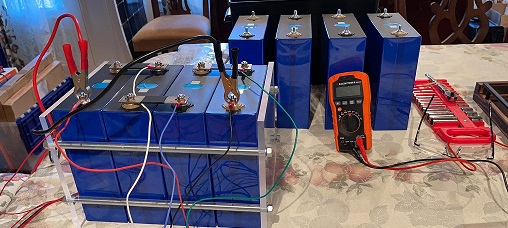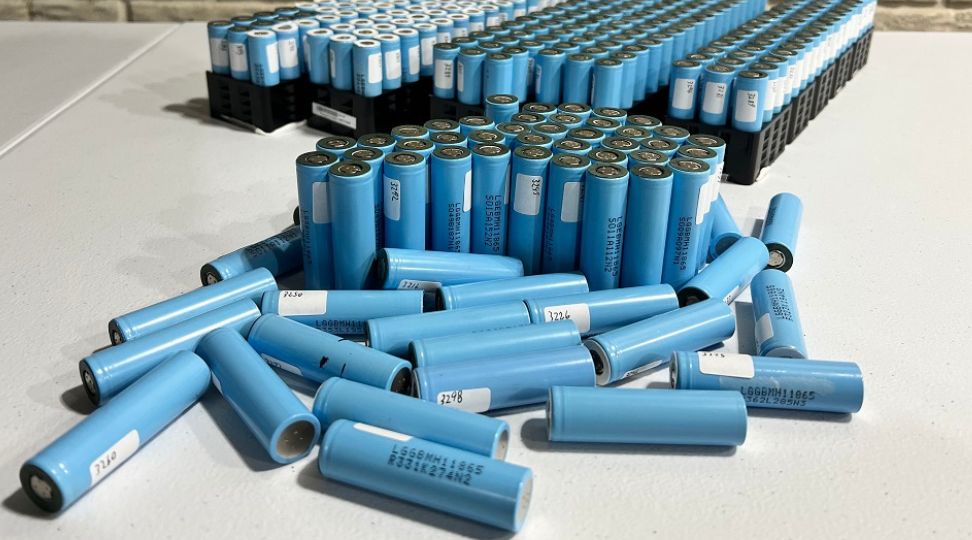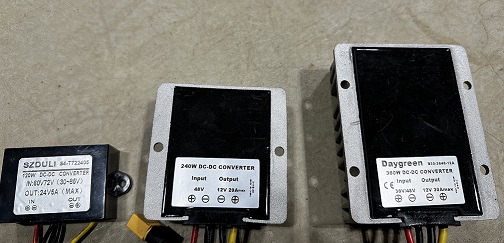
Which Battery Chemistry Is Best?
Table of Contents
If energy density and cost-effectiveness are the most important factors, then NMC (Nickel-Manganese-Cobalt) is the best battery chemistry, otherwise, LFP (Lithium Iron Phosphate) is the better choice because of its significantly higher cycle life.
Types of Battery Chemistries
There are many types of battery chemistries, but those using lithium-ion technology are generally the best. Out of those chemistries, there are many subtypes. The most popular subtypes are NMC (Nickel Manganese Cobalt) and LFP (Lithium Iron Phosphate).
NMC: Best Power Density, Energy Density, and Cost
NMC batteries have a superior energy density when compared to their LFP counterparts. The voltage characteristics of NMC cells play a significant role in their advantage. With a full charge voltage of 4.2 volts, a nominal voltage of 3.7 volts, and a dead voltage of around 2.5 to 2.6 volts, the NMC chemistry allows more voltage to be packed into a smaller space.
In contrast, LFP cells have a full charge voltage of just 3.7 volts and a nominal voltage of 3.25 volts. Because of this, to achieve the same voltage as an NMC battery, you need more LFP cells in series.
Partly because of the higher voltage, NMC batteries can store more energy (watt hours) in a given space or weight compared to LFP batteries. This attribute makes NMC batteries ideal for applications where space and weight are at a premium, such as personal electric vehicles or portable electronics.
In terms of cost, NMC batteries also hold a significant advantage due to their widespread production. Mass production and higher quantities mean that NMC cells are generally cheaper to manufacture, benefiting from economies of scale, making them more cost-effective in many situations.
LFP: Best Longevity and Tolerance to Temperature Changes
There are, however, two important factors to consider. LFP batteries stand out for their longevity. LFP chemistry can often endure 2,000 cycles or more before any notable performance or capacity degradation occurs. This is in stark contrast to NMC batteries, which will lose a significant amount of capacity after just 500 to 800 cycles.
Another great benefit of LFP chemistry is its superior tolerance to thermal changes and high temperatures. This allows them to maintain performance and capacity under thermal stresses that would be bad for NMC batteries, where in the same situation, they would see drastic reductions in performance and capacity as the temperature rises.
LFP batteries do have thermal limitations, though. They can be damaged if they are charged below freezing because this will cause a large amount of lithium to be plated on the anode. Because of this, many LFP Battery Management Systems (BMS) include temperature sensors that prevent charging below specific thresholds to mitigate this risk.
While LFP cells are more recently entering mainstream markets and initially may have higher costs than NMC, the total cost of ownership (TCO) of an LFP system can be lower in the long run due to their extended lifespan. This makes them a viable choice for applications where a longer cycle life is the most important factor, such as in stationary energy storage systems.
So, Which Battery Chemistry Is Best?
There is no one-size-fits-all best battery chemistry. Battery technology is still developing and there is no single chemistry that has all the bases covered. For this reason, there will be certain chemistries that are better for certain applications than others. We did a more detailed dive into comparing NMC vs. LFP chemistries you can check that article out if you are interested in learning more.
Best Battery Chemistry For Off-Grid Systems & Powerwalls:
When it comes to building a DIY powerwall or a off-grid system, people generally go with 12, 24, and 48 volts. 12 volts is the easiest and lowest cost option, and it's often the best option for smaller systems. This is where LFP chemistry has a major advantage. With a 4S LFP battery, you don’t need any kind of regulator to run 12-volt equipment.
This is because, unlike NMC chemistry, LFP cells have a nominal voltage that makes it so when you put 4 of them in series, it almost perfectly matches the voltage curve of a 12V lead acid battery (generally 14.5 to 10.5 volts), which makes it so you can hook 12-volt regulators and other high power equipment directly up to your LFP battery, where with an NMC battery, you would have to put a regulator in between to be able to use all of the power available.
Best Battery Chemistry For Limited Spaces
When it comes to watt hours per dollar, nothing beats NMC. NMC chemistry has one of the highest energy densities available, at around 250-watt hours per liter, which comes out to around 7000-watt hours per cubic foot. That’s a lot of energy storage in a square foot.
So, if packing the most capacity into the smallest space is the most important thing to you, then NMC is the best battery chemistry.
Best Battery Chemistry For Longevity
LFP chemistry can last 4 to 6 times as many cycles as a battery based on NMC technology. This makes it so that even though LFP batteries are less energy-dense, you end up getting more overall capacity from them in comparison to NMC.
The LTO chemistry has some of the highest cycle life but it has extremely low energy density. Due to how low its energy density is we don't see LTO being a viable candidate except for car audio battery solutions.
So, if you don't need the most battery capacity and the overall life is the most important thing to you, then LFP will be the best battery chemistry for you.




